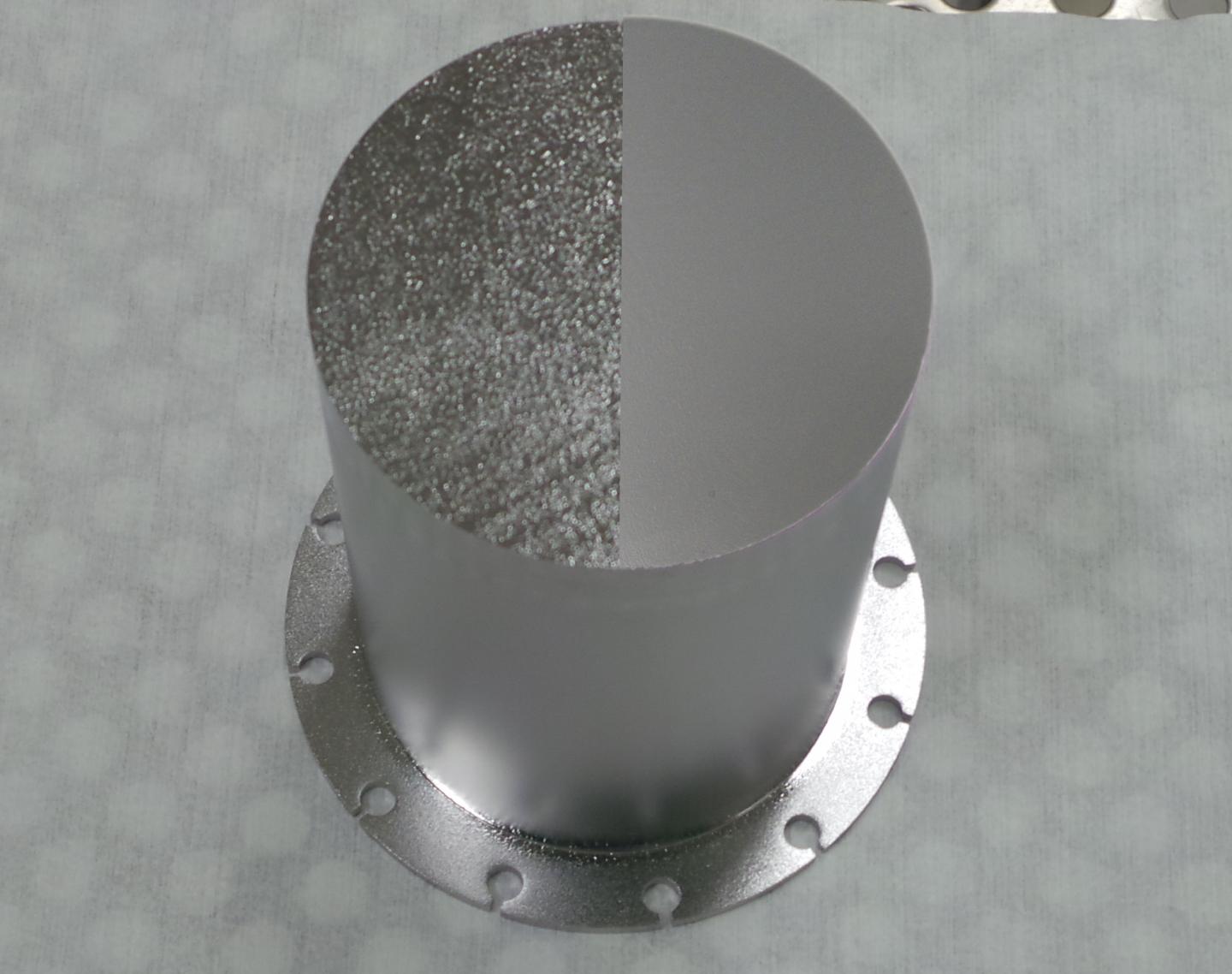
Credit: HZB
At present, niobium is the material of choice for constructing superconducting radio-frequency cavity resonators. These will be used in projects at the HZB such as bERLinPro and BESSY-VSR, but also for free-electron lasers such as the XFEL and LCLS-II. However, a coating of niobium-tin (Nb3Sn) could lead to considerable improvements.
Superconducting radio-frequency cavity resonators made of niobium must be operated at 2 Kelvin (-271 degrees Celsius), which requires expensive and complicated cryogenic engineering. In contrast, a coating of Nb3Sn might make it possible to operate resonators at 4 Kelvin instead of 2 Kelvin and possibly withstand higher electromagnetic fields without the superconductivity collapsing. In the future, this could save millions of euros in construction and electricity costs for large accelerators, as the cost of cooling would be substantially lower.
A team led by Prof. Jens Knobloch, who heads the SRF Institute at HZB, has now carried out tests of superconducting samples coated with Nb3Sn by Cornell University, USA, in collaboration with colleagues from the USA, Canada, and Switzerland. The experiments took place at the Paul Scherrer Institute, Switzerland, at TRIUMF, Canada, and the HZB.
“We measured the critical magnetic field strengths of superconducting Nb3Sn samples in both static and radio-frequency fields”, says Sebastian Keckert, first author of the study, who is doing his doctorate as part of the Knobloch team. By combining different measurement methods, they were able to confirm the theoretical prediction that the critical magnetic field of Nb3Sn in radio-frequency fields is higher than that for static magnetic fields. However, the coated material should display a very much higher critical magnetic field level in a radio-frequency field. Thus, the tests have also shown that the coating process used currently for the production of Nb3Sn might be improved upon in order to more closely approach the theoretical values.
###
Media Contact
Antonia Roetger
[email protected]
Original Source
https:/
Related Journal Article
http://dx.




